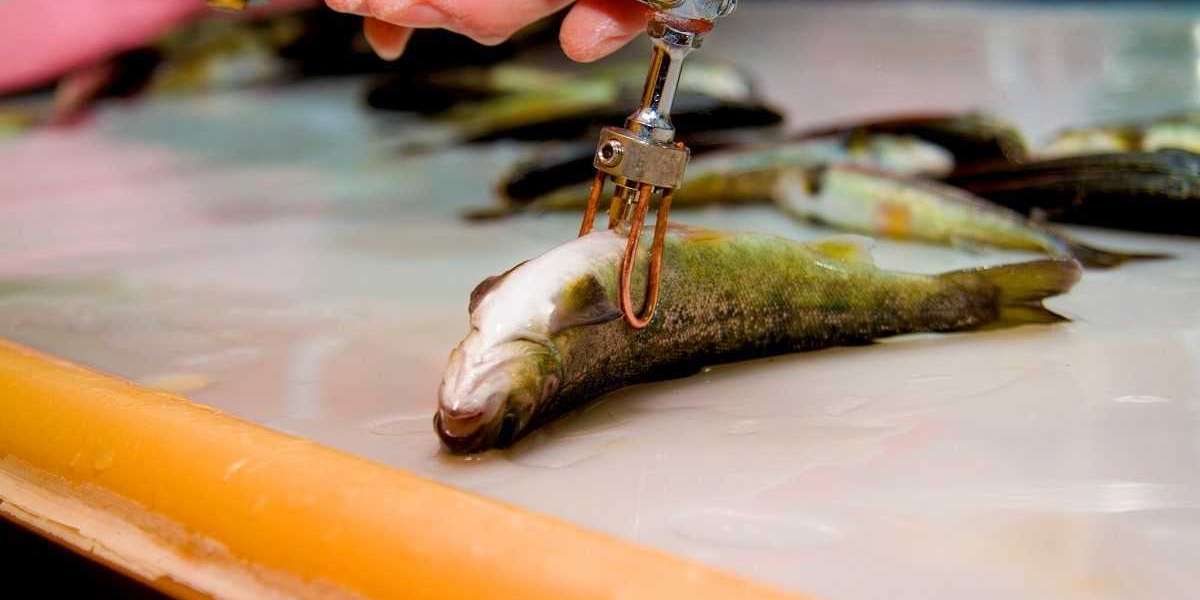Development of Effective Vaccines against Fish Diseases
One of the major challenges faced by the aquaculture industry is outbreaks of infectious diseases among farmed fish populations. Like other livestock, fish that are raised in high densities on farms are susceptible to various bacterial, viral and parasitic pathogens. If left unaddressed, disease outbreaks can cause significant mortality and economic losses for fish farmers. Over the past few decades, researchers have worked to develop effective vaccines against some of the most common and impactful diseases affecting farmed fish species.
Fish Vaccine have now been developed for several viral and bacterial diseases that pose major threats. For example, vaccines are commercially available for viral hemorrhagic septicemia (VHS), infectious hematopoietic necrosis (IHN), infectious pancreatic necrosis (IPN), and infectious salmon anemia (ISA) in salmonids. Vaccines have also been developed for bacterial diseases including furunculosis caused by Aeromonas salmonicida in salmonids, and vibriosis caused by Vibrio anguillarum, V. ordalii and V. salmonicida in marine fish species. These vaccines help fish farms manage on-site disease risks by conferring immunity to vaccinated fish populations.
Regulatory Approval Drives Commercial Availability
For fish farmers to adopt new vaccines, the vaccines must first undergo rigorous testing to demonstrate safety, efficacy and freedom from adverse effects. They must then receive regulatory approval from agencies overseeing veterinary products. Obtaining these approvals is a long and expensive process, but critical for enabling commercial manufacture and sale of fish vaccines. In recent years, several new fish vaccines have received key regulatory clearances in major fish farming regions. This has expanded the number of licensed vaccines commercially available to the industry. Regulatory approval gives farmers confidence that a vaccine has been proven effective using scientifically validated testing methods.
Expanding Vaccine Use to New Species
With further research and testing, the catalog of licensed vaccines for aquaculture continues growing. Scientists are working to develop vaccines for additional pathogens affecting high-value cultured species. Vaccines are also being explored for coldwater fish species as that sector expands. Geographic ranges of vaccine approvals are likewise broadening. More fish farming nations now have regulatory systems certifying vaccine safety and efficacy within their local industries. This allows multinational vaccine manufacturers to distribute approved products to new international. As fish vaccines gain regulatory approvals for additional species and regions, their accessible potential increases correspondingly.
Vaccine Administration Methods Evolve
Early fish vaccines often required individual fish injection by skilled workers, which drove up costs. Today, automated immersion and spraying methods deliver fish vaccines more efficiently. For example, immersion vaccination systems circulate vaccine preparations through water flowing over fish populations en masse. Post-vaccination booster injections are also unnecessary in some cases. Controlled-release vaccine implants even confer lasting protection. Advanced delivery methods boost vaccine uptake by streamlining administration procedures on large, commercial-scale operations. Easier, less labor-intensive vaccine use lowers financial barriers for fish farmers and increases the feasibility of routine vaccination programs on farms.
Optimizing Timing of Vaccination Programs
Proper timing of vaccination is crucial for achieving optimal protection levels in fish. For some diseases, vaccinating juvenile fish early in grow-out periods prepares immunities before natural pathogen exposures occur. In other cases, booster doses during later life stages reinforce immunities when disease risks peak. Close coordination with fish health professionals helps farmers determine ideal vaccination windows. Environmental factors too can impact timing needs. Warmer water temperatures may call for vaccination several weeks ahead of colder season disease outbreak periods. Fine-tuning vaccination timings tailors disease prevention strategies to individual farm settings and production cycles. This balancing of protective measures with practical realities of fish production optimizes health and economic outcomes.
Continued Advancement through Ongoing Research
Although notable progress has been achieved, developing new fish vaccines and refining existing ones remains an active area of research. Scientists investigate options like DNA vaccines and plasmid DNA delivery mechanisms as promising novel approaches. Combination vaccines addressing multiple pathogens simultaneously also show potential. Advancements in vaccine design, delivery systems and immunostimulants could further strengthen protective effects. Research additionally targets understanding fish immunology and immune responses at deeper levels. Such work aids development of even more targeted, efficacious and user-friendly vaccines. Sustained scientific efforts ensure the aquaculture industry continues gaining powerful disease management tools through strategic application of vaccination programs.
Adoption Contingent upon Demonstrating Economic Viability
Ultimately, wider fish vaccine adoption depends on demonstrating clear cost-effectiveness and return on investment to farmers. While reducing mortality risks, vaccines introduce additional expenses which producers must see offset by protected production gains. Cost-benefit modeling helps quantify relationships between vaccination schedules, disease impacts avoided and financial outcomes like increased harvest weights and survival rates. Multi-year on-farm field trials providing such data build strong economic rationales. As evidence confirming profitability accumulates, fish farmers obtain convincing arguments for proactively investing in health oriented strategies like vaccination. A thriving vaccine fuels this demonstration process through continuous output of economic performance insights.
Fish vaccine technologies are rapidly advancing to address pathogenic threats within the expanding aquaculture sector. Continued scientific progress, together with accumulating proof of immunization programs' commercial merits, primes the industry for vaccine solutions to play an increasingly core preventive role against disease moving forward. This bodes well for sustained aquaculture growth and long-term viability of affordable fish protein supplies. It also opens lucrative opportunities for vaccine manufacturers, distributors and allied services catering to aquaculture health needs globally.
Explore Our More Blogs on Fish Vaccine








